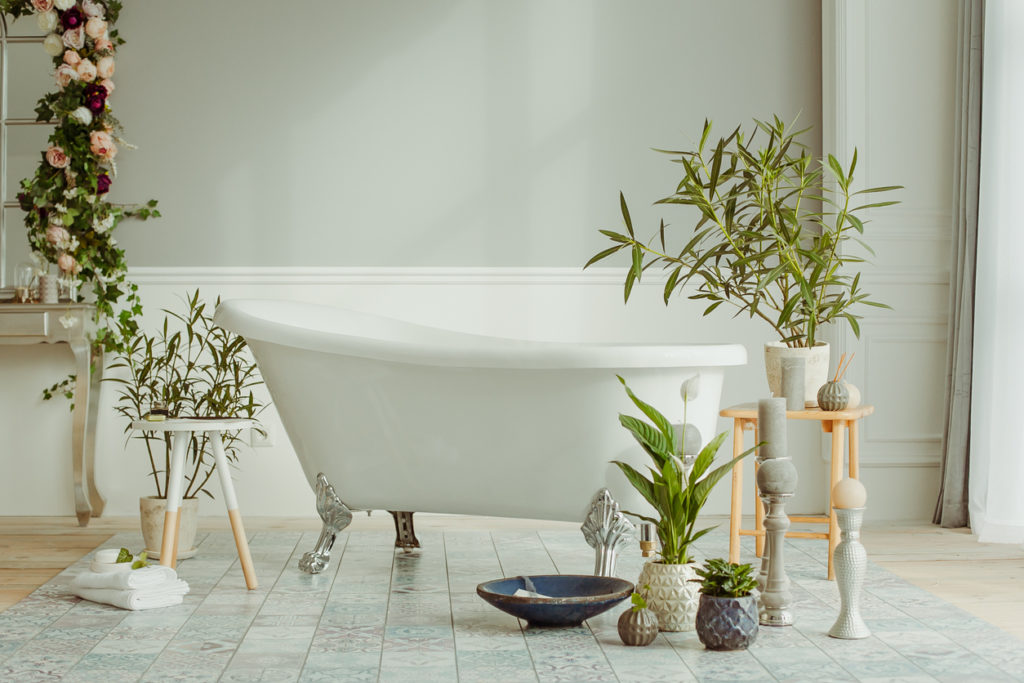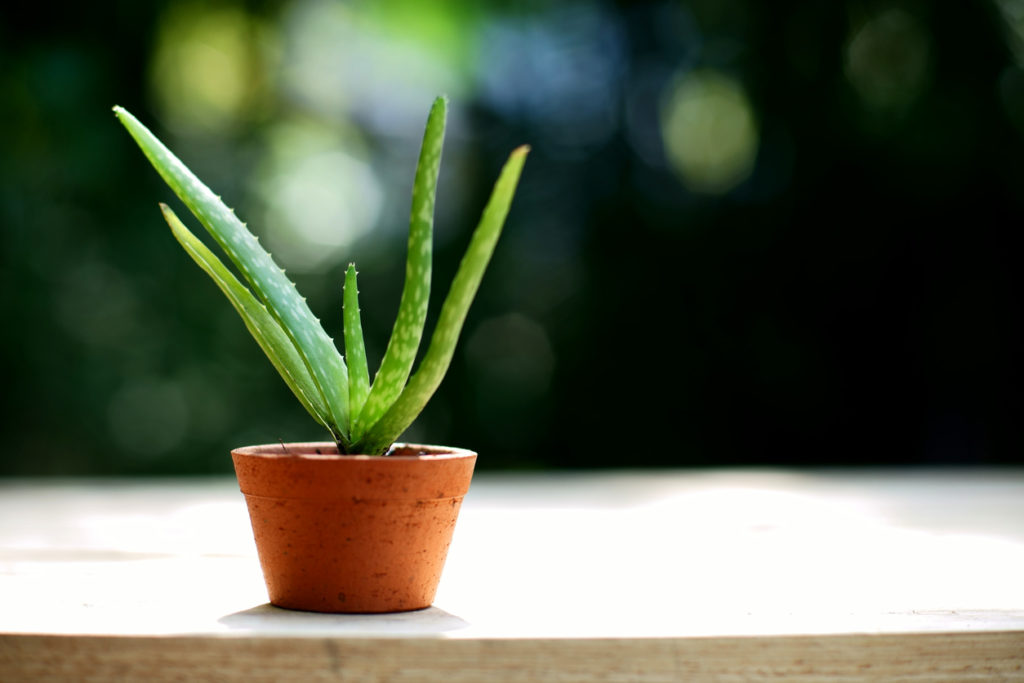Incorporating Plants into the Bathroom
Plants are a great addition to any bathroom, adding colour, life and even purifying the air. They're a mainstay in lots of different bathroom styles, including Scandinavian inspired and Japanese style bathrooms. But when choosing the ideal plant for your bathroom, it’s important to do your research. Despite the warm, humid air that’s produced by your daily shower, it can get cold when the room is left unused or empty during the day or at night.
Owners of houseplants will already know the benefits of using plants in the home. But with this, there are difficulties too. Some houseplants are notoriously difficult to look after, and if they aren’t cared for properly, they could die. In order to help you to buy the best bathroom plants, we’ve put together this guide.
Good bathroom conditions for plants
Humidity
Humidity levels in bathrooms vary naturally, and when the shower is in use, the bathroom will be at its most humid. If you want to fill your bathroom with plants but keep the bathroom cold apart from when it’s in use, you may need to rethink this habit in order to keep your plants happy.
Not all plants enjoy humidity, however. Succulents prefer drier conditions that imitate the conditions of the desert, and if they’re kept consistently moist, they will rot.
Sunlight
A lot of bathrooms have low levels of sunlight, and some bathrooms have no windows at all. To remedy this, choose fluorescent light bulbs that can provide light that plants can enjoy too. Low light, high humidity, and temperature fluctuations are all crucial considerations when choosing plants for a bathroom.
Before deciding on what plant you need, first consider the level of light and warmth in your bathroom. Once you select your plants, you may find yourself moving them around to find the ideal light – remember that this can change from season to season.
Design
If you’ve decided to include plants in the design of your bathroom, you may want to finish the look with natural bathroom design elements. Neutral colours and nature-inspired textures will go a long way to helping you create a natural space. Use wood effect bathroom wall panels to accentuate the natural theme that your bathroom plants establish, or you can go for a colder stone-inspired look.
Best plants for the bathroom
Aloe Vera
Aloe Vera needs plenty of natural light to grow to its full potential, but this houseplant is easy to care for and will quickly multiply into other plants too. Either keep the smaller plants in the same pot together or separate them off to create new plants. Whilst Aloe Vera is a beautiful, elegant plant, it also is incredibly useful for immediate relief to mild to moderate burns, cuts or bites. Simply cut a frond off from the plant using scissors, and then cut away the outer leaf in order to access the Aloe Vera gel inside. You can apply this directly to the skin.
Aloe Vera should be watered deeply and infrequently, with less in the winter. Water every 3 weeks and allow the soil to dry completely 2 inches deep.
Bamboo
Bamboo is incredibly versatile as it will thrive at almost any light level and doesn’t always require soil. The plant will grow very quickly but trim it regularly or locate it in an area that will hinder its growth – for example, underneath a shelf. Bamboo is a crucial element in the balance of oxygen and carbon dioxide, and what’s more, bamboo farms are environmentally friendly as they reduce pollution through oxygen, and the roots are a water barrier that helps control soil erosion.
Bamboo should be watered twice a week but ensure there is good drainage in the soil.
Cast iron plant
The cast iron plant has been popular for hundreds of years since the Victorian era. Their resilience means that they tolerate almost anything, including your bathroom. Leaves are commonly dark green, yellow striped, or dotted with yellow. The cast iron plant is ideal for low light settings, changeable temperatures or bathrooms with no windows.
For the best results, you should let the soil dry out completely before watering again. To keep the leaves free from dust, wipe with a damp cloth.
Begonia
Native to subtropical and tropical climates, begonias can also be grown indoors as ornamental plants. With beautiful, brightly coloured flowers most commonly red and pink, begonias are ideal for bathrooms that need a colour injection. These plants need bright light and should be kept warm.
Do not let the soil of the begonia dry out completely. If the soil is dry up to the first knuckle of your finger, you should give the plant a water.
Croton
Crotons are wonderfully vibrant plants that need direct sunlight in order to prolong the colours on their leaves. Although it’s a beautiful plant, it may not be the best for those with pets as crotons are poisonous to cats. Crotons love humid environments, so placement close to a shower is best for the plant.
Water them regularly and they’ll grow quickly. When kept inside, it is easy for the plant to become dusty. If this happens, you can take the plant outdoors to spray it off or use a wet sponge to remove any dust.
Cyclamen
Cyclamens grow in cool, humid environments, but temperatures that are too high or even too low will cause the flowers to droop rapidly and the plant begin to yellow. Houseplant cyclamens are from tropical climates and they cannot tolerate temperatures below 4°C.
You should water cyclamen by putting water in a tray and then allowing the roots to take up the water, rather than getting the soil wet. Wet soil can lead to rot.
Dumb cane plant
The dumb cane plant is relatively similar in appearance to the Chinese Evergreen and Cast Iron plant, but it will grow much bigger. Ideal for bathrooms with no windows, the Dumb Cane Plant loves artificial light, high humidity and moist, well-drained soil.
Check the soil with your finger to make sure that you’re not overwatering the plant. Use your finger to check the soil is dry before watering.
































